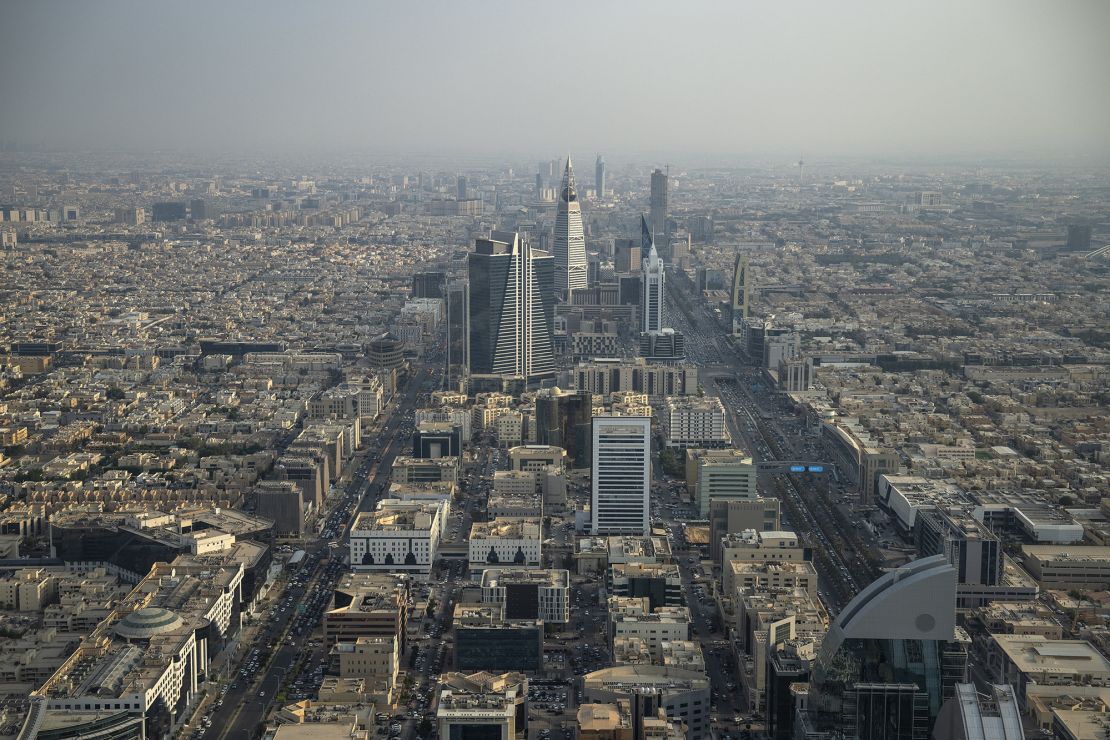CNN
—
Electric vehicles are a common sight on roads across the world — but not everywhere.
In Saudi Arabia, electric vehicles (EVs) account for just over 1% of overall car sales, according to PricewaterhouseCoopers’ (PwC) “eMobility Outlook 2024: KSA Edition,” published in September 2024. Globally, about 18% of all cars sold in 2023 were electric, according to the International Energy Agency.
There are several roadblocks to the rollout of cleaner cars in the desert kingdom, but things are changing quickly.
The Electric Vehicle Infrastructure Company (EVIQ) is at the forefront of that transformation. EVIQ was founded in late 2023 as a joint venture between the country’s sovereign wealth fund — the Public Investment Fund (PIF) — and Saudi Electricity Company.
By the end of 2023, there were around 285 public charging points in the country, according to the PwC report, mostly slow chargers. In January 2024, EVIQ opened its first fast charging station in the country’s capital, Riyadh. By 2030, it plans to have 5,000 fast chargers installed across 1,000 locations.
“Very few people are willing to buy an electric vehicle without having the comfort of seeing infrastructure being available,” EVIQ CEO Mohammad Gazzaz, told CNN. “We’re paving the way.”
Today, EVs are mostly purchased by people that “can charge at home with their private wall boxes,” said Heiko Seitz, Global eMobility Leader, PwC Middle East, and an author of the eMobility report.
A lack of charging stations isn’t the only reason for the slow uptake of EVs in Saudi. In 2024 more than 60% of models available cost more than $65,000, according to PwC’s report, while nearly 73% of gasoline-powered models cost less than that. Generous fuel subsidies mean a liter of gasoline, about a quarter of a gallon, currently costs Saudi drivers around 60 cents.
EV batteries can struggle with the temperatures typical of a Saudi summer, and the additional energy needed for cooling them can significantly impact their charging speed and range. And the country is vast — just over a fifth of the size of the US — with the distance between its two largest cities more than 950 kilometers (almost 600 miles), longer than the average range of most EVs.
But the country has ambitious plans for reducing its dependence on oil revenues and its carbon emissions. Oil accounted for 60% of government revenue in 2024, with crude oil and natural gas accounting for more than 20% of the country’s GDP over the same period.
It wants 30% of the cars in its capital Riyadh to be electric by 2030. But Saudi isn’t just adopting EVs, it’s “building an entire industrial ecosystem” around them, said Seitz. The country is embracing “eMobility as a strategic lever to decarbonize, diversify its economy, and localize manufacturing at scale.”

That includes plans to become an EV manufacturing hub. PIF is the largest shareholder in the US-automaker Lucid, which in 2023 opened the first car manufacturing facility in the country.
CEER, a joint venture between PIF and the Taiwanese company Foxconn, plans to launch its first Saudi-produced EV by 2026. And a joint venture between PIF and Hyundai has broken ground on a manufacturing plant in the country.
Major EV producers are now selling in the country. China’s BYD opened its first showroom there in May 2024, and in April, Tesla launched in Saudi Arabia.
Seitz said the introduction of Chinese models is likely to help drive prices down. BYD’s Saudi website lists its Atto 3 model with a starting price of approximately $27,000.
More than 40% of Saudi consumers are considering purchasing an EV in the next three years, according to PwC.
Today, there are EVIQ chargers in Riyadh and Jeddah. In April, the company rolled out its first highway EV charging station. “It’s still really foundational work,” said Gazzaz.
He said that EVIQ is targeting 50 to 60 new charging sites this year, including in smaller cities like Mecca and Medina. By the end of 2026, Gazzaz anticipates that the country will have a “minimum viable network.”
“We’re not talking only tier-one, but even tier-two cities, and covering some of those main highways,” he said. “Ultimately we’re trying to cover about 70 to 80% of travel requirements across the Kingdom by 2026.”
Gazzaz declined to share how much would need to be invested to reach the targets.
Seitz said that the country’s official target of 30% electric cars in Riyadh is likely to be met, but that “an additional push” might be required to make EVs a mass product for the entire country.

A survey published in May 2024 by Saudi Arabia’s King Abdullah Petroleum Studies and Research Center, and University College London, concluded that large-scale uptake of EVs in Riyadh would likely require the government to introduce financial incentives such as VAT exemption for new vehicles, subsidized charging, and free installation of home chargers, “at least in early stages of deployment.”
The government says it has introduced some financial incentives and subsidies for EV buyers.
Better infrastructure will help push forward the country’s EV revolution, experts say.
“EV prices are falling, model options are growing, and government signals are clear — yet range anxiety remains,” said Seitz. “Public charging is the main gap, and it’s now a top priority to fix.”

